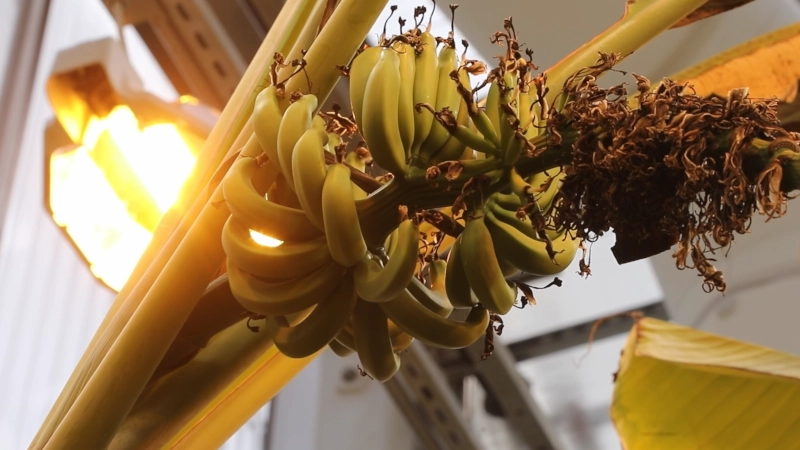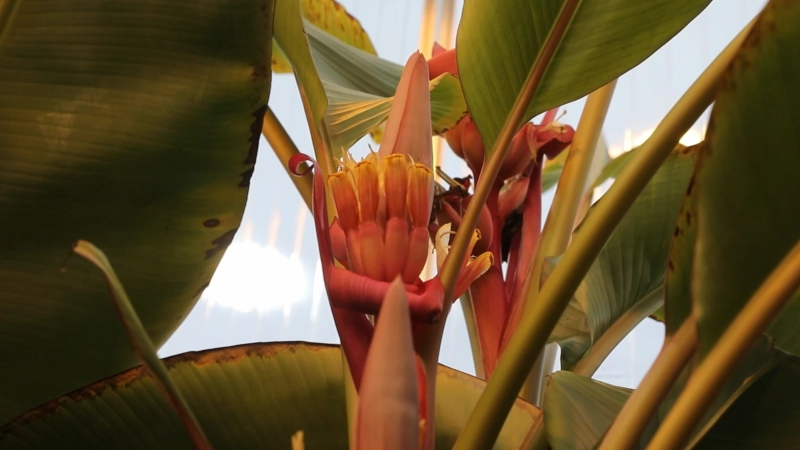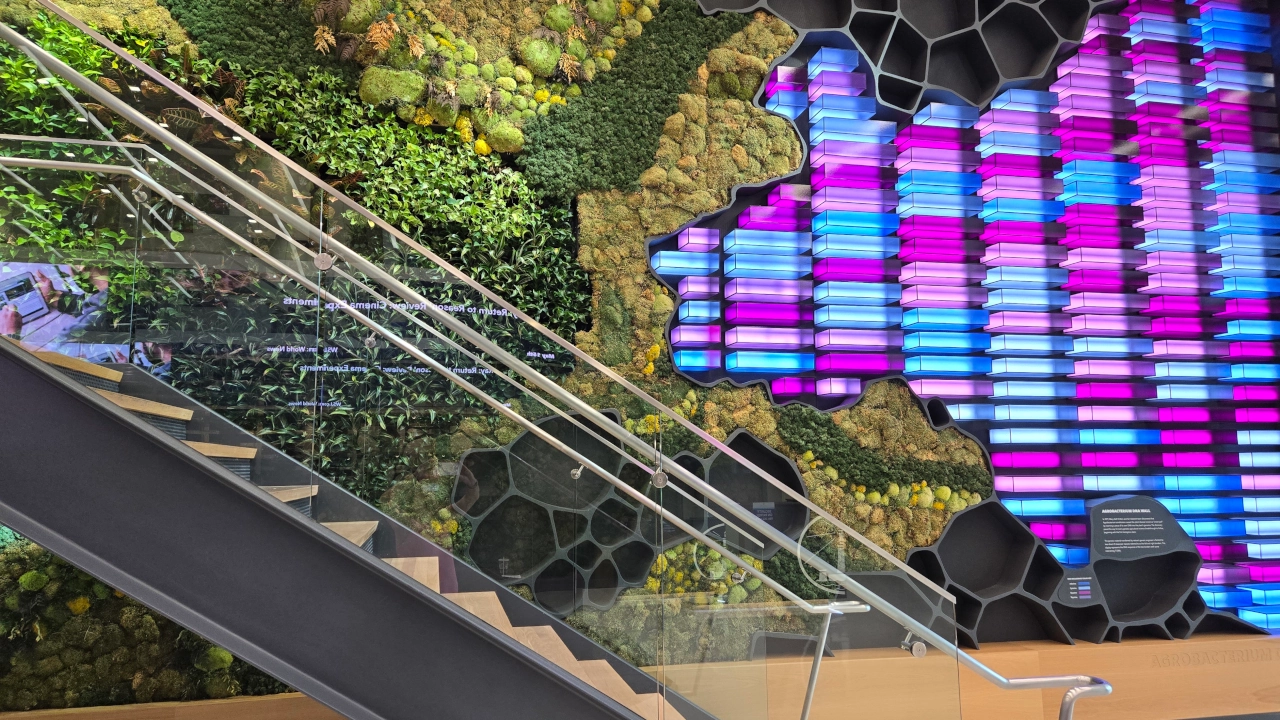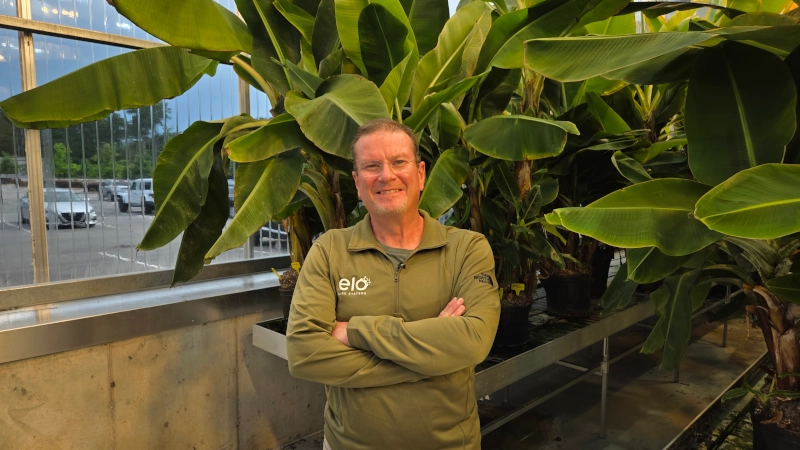Bye Bye Bananas – In 10 Years, They’ll Be Extinct. Unless… See The Story Now On YouTube Or TV
Worldwide Fungal Infection Has Been Raging For 20 Years
RALEIGH, NC — The bananas get your attention. You don’t expect, in one of the South’s crown jewel cities, a center of research, education and commerce, to be looking at banana trees. Then again, you probably didn’t expect to be living in a world where in less than 10 years we won’t have any more bananas. But you are.
Two decades ago, a fungus called Fusarium oxysporum began to spread like wildfire throughout the world’s banana producing regions. Now it’s laying waste to Central America. There is no cure. There is no treatment. Banana groves are simply failing left and right. Within a decade, they’ll all be gone. Extinct.
Which is why you’re in Raleigh looking at banana trees. These are familiar – they look just like all the other trees that produce Cavendish bananas, the kind we buy in stores and the kind that’s long sustained a hungry world. But they’re unique: They’re the only Cavendish banana trees in the world that are immune to Fusarium infection.
Molecular biologist Todd Rands is standing in a sweltering nursery that looks and feels for all the world like a tropical jungle, save for the fact that it’s in the Raleigh laboratory facilities of ELO Life, a research firm he leads that specializes in modern lab-based approaches to solving agricultural problems.
The CEO likes what he sees. These trees are healthy, strong, mature and ready to start producing bananas. So, Rands pronounces, they’ll soon be on their way to Central America to join others from the lab that are already planted in the hostile environment as a last-gasp chance to save the banana.
The new hope for the Cavendish is the result of years of research and development here. Using genetic engineering, the ELO Life team has combed through the world’s hundreds of banana varieties looking for those with disease-resistant characteristics that can be spliced into the Cavendish to make them, too, immune to Fusarium.
That’s the story that’s brought the team from Where The Food Comes From to Raleigh to make an episode of the YouTube and network TV series. You can watch the show now on YouTube @WhereTheFoodComesFrom or see it Oct. 4 at 10 p.m. EDT and again at 1:30 a.m. on the RFD-TV Network (DirecTV, Dish, Cable, Sling).
“It’s hard to understand why it’s not more widely discussed,” Rands ponders. “I think human beings have a tendency to not think about unpleasant things until it’s way too late. And it’s almost too late for bananas.”
But the fruit also has to be resilient enough to survive shipping to far away markets. It also has to be profitable for farmers to grow. The world’s other bananas simply don’t make the grade: too bland, too seedy, too quick to spoil, too something.
And now in less than a decade the Cavendish will all be gone. No more banana smoothies. No more banana splits. No more bananas with your breakfast cereal. Zip. Zilch. Nada.
Amazingly, in a moment of cosmic déjà vu, this has all happened before. There is a very old song you may have heard, Yes, We Have No Bananas, released in the 1920s. It was a shopkeeper’s lament about continually telling people he was out of bananas. Because there were none. Because a Fusarium fungus was wiping out the crop.
Have you ever noticed that banana flavorings – popsicles, candies and the like – don’t actually taste like bananas? It’s because that’s what bananas used to taste like. Before the Cavendish, another banana, the Gros Michel, was king. It has all the same characteristics as the Cavendish and dominated the market in the exact same way. But very few people alive today have ever tasted one.
Because, starting around the turn of the 20th Century, the Gros Michel came under attack from Fusarium. Over decades, the bug won. The Gros Michel was gone.
Fortunately at the time, the Cavendish had all the same great traits and was waiting on deck. It didn’t seem to care about the fungus, so growers replanted and continued along untroubled.
Until 20 years ago. Here’s the thing about Fusarium. Once it’s in the soil, it’s there. You can’t get rid of it. But if it didn’t bother the Cavendish 70 years ago, why is it problematic today?
Ah. Because it’s a slightly different strain of Fusarium now.
Says WTFCF producer and host Chip Carter, “One thing I’ve learned making this show is that the circle of life isn’t just a song from a musical – it’s what the people who feed us have to deal with every day. There are constant threats to our food supply. Researchers find solutions to those threats. And then mutations occur. Then researchers find more solutions. Then comes another mutation. It’s endless. And that’s the real circle of life.”
We’ll know in just a year or two if ELO Life has the upper hand on Fusarium – and whether or not we’ll have bananas moving forward the way we’ve grown accustomed to.
Rands is optimistic. “In the very earliest trials, they’ve done very well. And here in the nursery, during our trials, they’re living in an environment where they’re literally swimming in Fusarium, at levels far higher than they’d ever encounter in nature. Time will tell. But there’s just not much time.”
Where The Food Comes From travels the country visiting farms and going up and down the supply chain to show all the invisible hands that keep the world fed. Currently in Season 5, full episodes are available on the show’s YouTube channel now, and that number will grow to 65 by the end of the year!




